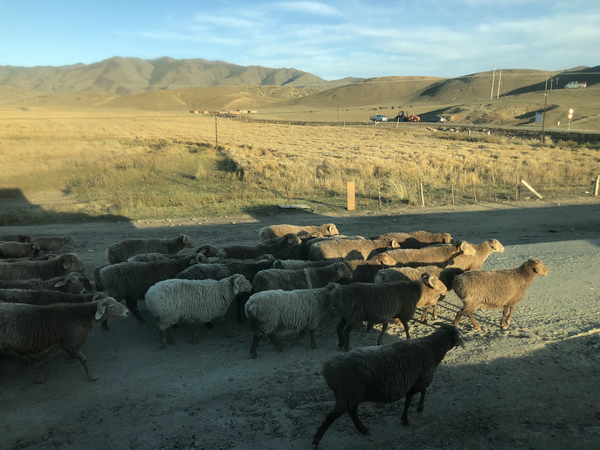Xinjiang's autumnal allure
 0 Comment(s)
0 Comment(s) Print
Print E-mail China Daily, October 27, 2020
E-mail China Daily, October 27, 2020

Rare metals from the mine were used to make China's first missile, atomic bomb, hydrogen bomb, nuclear-powered submarine and satellite.
The 300-meter-deep pit looks like an upside-down conical straw hat after decades of exploitation.
It measures 400 meters from east to west and 600 meters from north to south. A road wide enough for trucks coils from the surface to the bottom, where the Irtysh's water seeps in to form an emerald pond.
The nearby 3,600-square-meter Koktokay Geological Museum details the stories of the mine and the science of the minerals.
Fuyun is working to also employ nomadic culture to attract visitors and increase local incomes. The county's 102,000 people are from 29 ethnic groups. Most are Kazak and share a deep connection with horses.
Since 2013, the government has invested 45 million yuan to build a 100-hectare center devoted to ethnic Kazak horse culture. Fuyun's Kazak horse racing was listed as a national intangible cultural heritage form in 2014.
All of Fuyun's children learn three sports at school-skiing, horse riding and soccer.
Schools have hosted horse races at the cultural center every weekend since July 2019, with about 100 male and female students competing, cultural center manager Li Liangliang says.
"Local herders provide the horses, and all the riders are students. Kids usually start learning at age 3," he says.
Performances precede the competition, including girls' chases (women pursuing their crushes on horseback) and sheep grabbing (developed from when herdsmen needed to nab sheep on horseback when wolves approached).
Competition distances range from 3 to 15 km.
"Since 2015, we've hosted six big events here. A total of 80,000 people came, and 250,000 people watched online," Li Liangliang says.
People who still live in poverty can sell such foods as yogurt and cheese in 50 free stalls provided in the cultural center.
The payments to herders for using their horses, sales from food stalls and fees from tourists who pay to ride horses have increased annual incomes by an average of 4,000 yuan ($600).
Fuyun receive 5.9 million tourists last year.
"We expect 1.8 million this winter," says Gu Fang, head of Fuyun's culture, sports, radio, television and tourism bureau.
Fuyun hosts the Koktokay International Ski Resort, which opened on Oct 1, with 43 professional ski tracks. The 4.5-kilometer-long No 1 track tumbles 900 meters from the top.
And soon more snow will cover northern Xinjiang's skiing spots, replacing autumn's medley of vibrant hues with a monochrome of white that offers its own kind of colorful beauty.






Go to Forum >>0 Comment(s)